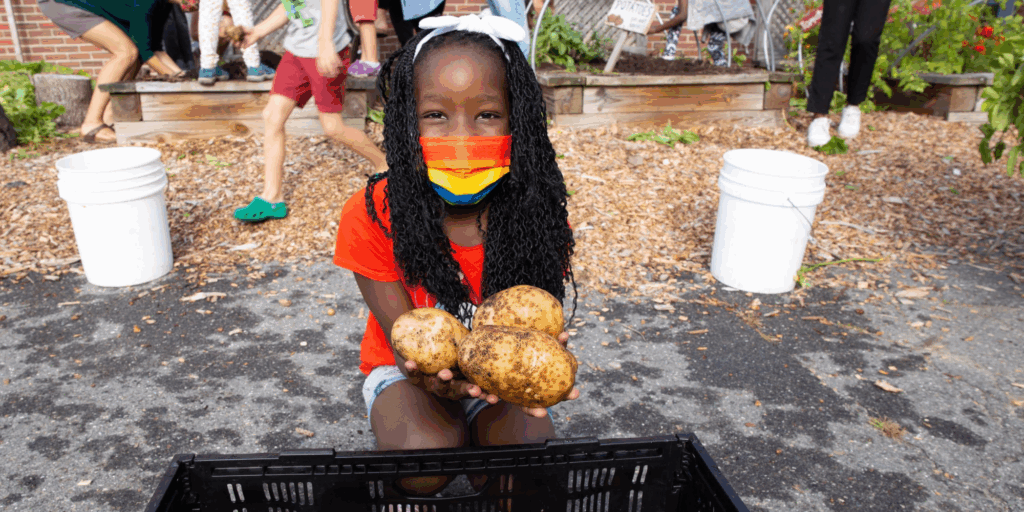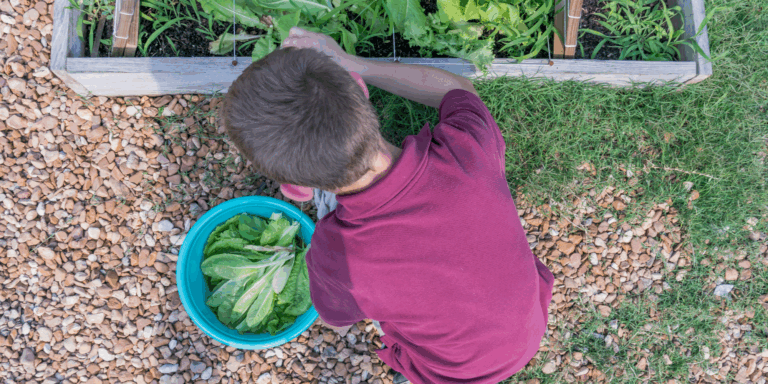Local Food in Schools: 3 Things to Know
Why local food is the cream of the crop.
Help nourish students’ minds, bodies, and hearts this holiday season!
Why local food is the cream of the crop.

Eat local, shop local, buy local. You’ve probably heard these slogans before, but what do they really mean?
Local food—food that’s grown or produced relatively close by to the people who eat it—is widely known to be good for our bodies and our communities. And there’s a growing movement to make local food a reliable part of the school day, from cooking class to the garden to the lunch line.
More than half of the school food programs in the country incorporate local food into school lunches, and school food programs spend around $1.8 billion on local food annually. What makes local food so special? Here are three things to know.
When fruits and vegetables are at peak ripeness—the perfect time for picking by a local farmer—they’re also at their most nutrient-dense. But produce loses some of its nutritional value with time. When fruits and veggies are transported long distances or exposed to changes in light and temperature, their nutrients slowly begin to degrade.
To keep food from spoiling, produce that’s going to travel a long way is often harvested before it fully ripens, reducing its nutrient density. Fruits and vegetables from the grocery store are still nutritious—but the just-picked freshness of local produce makes it richer in nutrients (and often tastier, too).
What does that mean for schools? Schools are where many kids eat the most nutritious meals of their day. And school meals that include local food showcase those ingredients at their best—fresh, colorful, nutrient-dense, and delicious—and make it more likely for kids to try, eat, and enjoy them.
Sure, you can explain to a student how a potato grows.
Or you can bring them to the potato plants in the school garden, harvest fresh potatoes straight from the dirt, take turns inspecting the potatoes for bugs, and then cook potato salad for lunch. Which one sounds more engaging?
We know that kids learn by doing. Exposure to local food—whether in the school garden, at a local farm, or at the weekend market—creates countless opportunities for the kind of real-world, hands-on learning that kids most benefit from. Meeting farmers or other food producers shows kids what a future in food could look like, and teaches them how to take care of their environment and their community. And when kids see where their food comes from, they’re often more invested in learning about it. Besides, who doesn’t love a lesson that includes a snack?

When you shop at a local business instead of a big chain, you’re investing in your own community. The business can select products based on what the community likes, pay workers who live in the community, and spend their money at other local businesses. Everyone benefits, and the community grows stronger.
The same cycle applies to local food in schools. When schools buy food from local producers, they keep money in the local economy. There are fewer disruptions to supply chains, which can result in spoiled food and wasted resources, and more direct lines of communication between schools and their food supply. Jobs stay in the community, and families have more resources as a result.
And when schools invest in getting to know local producers, those producers can choose crops based on what’s most relevant to school menus and what schools want to purchase. Those products, in turn, become more consistently available, giving schools the stability they need to plan meals. A stronger local economy, less waste, and a reliable supply of fresh, delicious food—again, everyone benefits.
Policies at the local, state, and federal levels can all impact students’ access to nourishing local food. If you’re feeling energized by the potential of local food, create a quick advocacy profile with FoodCorps. We’ll reach out when there’s an opportunity for you to raise your voice where it matters most.
Hungry for more? Sign up for FoodCorps emails to get fresh updates to your inbox.

Our 2025 Child Nutrition Policy Year in Review

Winterizing Your School Garden

5 Awesome Small Businesses by FoodCorps Alums